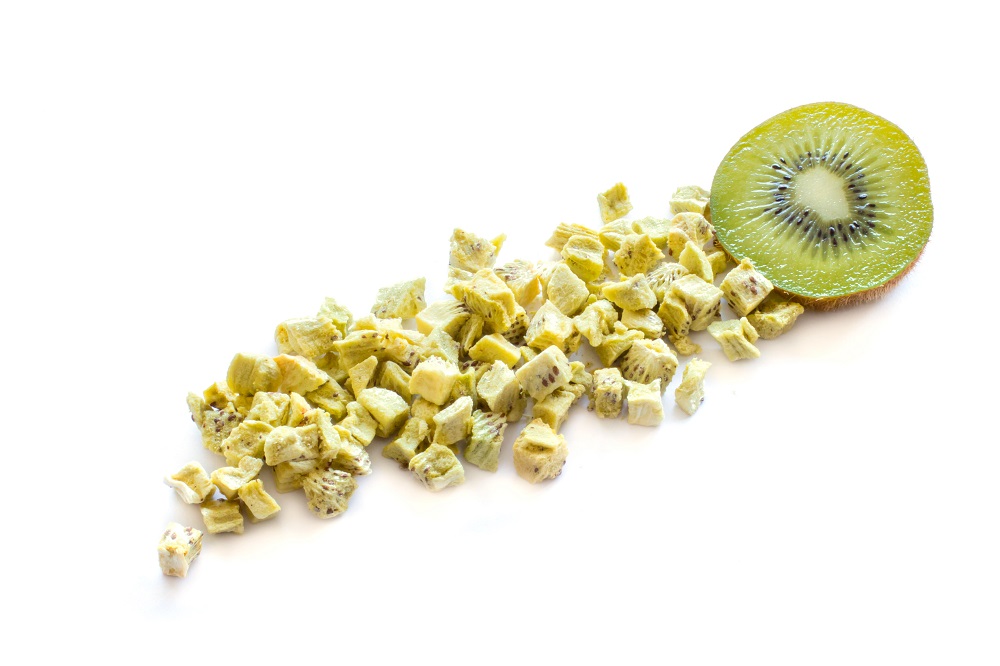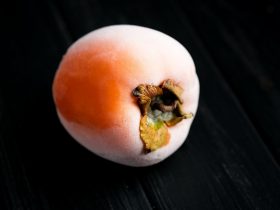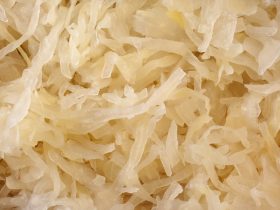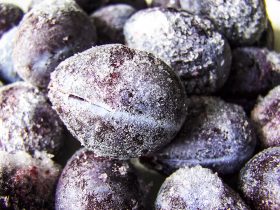The kiwifruit, often shortened to simply kiwi in the western hemisphere, is a group of berries native to central and south east Asia. With a beige or green outer skin and a soft inner flesh in a variety of colors such as yellow or green, the kiwi is distinct amongst other berries owing to its unique appearance.
From a culinary perspective, the kiwi is often eaten by itself or as a topping meant to add a tart and somewhat sweet flavor. Texture-wise, kiwi is often quite juicy, with tiny seeds interspersed throughout the flesh.
However, due to the fact that kiwis are so juicy and therefore high in water content, they are quite susceptible to bacterial and fungal colonization or infestation and as such require preservation in some form or another if not immediately consumed.
Among these preservation techniques is that of freezing, wherein kiwifruit can withstand the harsh temperatures up to an extent, allowing its shelf-life to be extended significantly longer than it would otherwise be if left unpreserved. However, like other fruits high in water content, the damaging effects of freezing are quite pronounced and will degrade the texture of the fruit.
Why Should You Freeze Kiwi?
Like most fruits and vegetables, kiwi is susceptible both to colonization by microbiological life as well as its own internal ripening enzymes, both of which can cause the kiwi to spoil or lose its quality quite quickly when left out in the improper conditions.
Known as catalyzing conditions, these improper conditions not only allow these quality degrading events to occur but may even accelerate the phenomena, significantly shortening the relative shelf-life of the kiwi.

As such, the surest way to combat both the development of bacteria and fungi as well as to arrest the chemical reaction of ripening enzymes is to place the kiwi in a storage environment that inhibits or prevents these things from occurring.
Very low temperatures such as that of a refrigerator or even a freezer with the thermostat set to 32°F or below can slow down or even entirely stop both of these factors.
How Long Will Kiwi Last at Room Temperature?
As previously mentioned in the last section of this article, storing fruits and vegetables at room temperature essentially allows them to spoil unimpeded, and as such should be consumed within their shelf-life or otherwise preserved in some way or another.
At the absolute maximum, kiwis are capable of retaining their shelf-stability for up to five days before beginning to show signs of going bad. This, however, requires certain environmental factors to be accounted for when choosing where precisely to keep the kiwis.
Factors such as direct sunlight and high relative moisture will both act as catalysts for microbial life development as well as the innate enzymatic actions present within the kiwi.
Additionally, if the kiwi is stored adjacent to certain types of fruit that effuse the compound ethylene into the air as they begin to spoil, this will also accelerate the eventual spoilage of the kiwis themselves. As such, care must be taken to store the kiwi some distance away from other fruits and vegetables that may be kept in the pantry or cupboard as well.
Ideally, kiwis should be stored in a loosely covered container free of odors or moisture. This container must then be kept in a dark and cool corner of the kitchen or pantry, so as to extend the fruit’s shelf-life for as long as possible.
Can Kiwi be Refrigerated?
A far better alternative than simply leaving your kiwi out in room temperature environments, choosing to refrigerate the kiwifruit will both extend its shelf-life and prevent its quality from degrading for a longer period of time.
Kiwis may be stored in the refrigerator with either their skin completely intact or in slices, though the difference between these two is the method at which they must be insulated in.
In the event that you are storing intact kiwis, all that is required is to place them in an air-tight container of sufficient size to contain all the fruit without any bruising or damage. Place this container of kiwi anywhere in the refrigerator except the crisper, as the high humidity in this section of the refrigerator may cause condensation within the container.
However, if you are instead storing kiwis in their sliced or crushed form, you must instead place them in a resealable plastic pouch with as much air as possible pushed out of it, essentially vacuum-sealing the fruit within.
Intact kiwi stored in an air-tight container can last for up to fourteen days before its edibility must be called into question.
Kiwi that has been crushed or sliced, however, will only last for up to three days, owing to the fact that its high moisture content flesh has already been exposed to bacterial and fungal cultures.
What Kind of Kiwi Can be Frozen?
As kiwi is oftentimes processed for use in dishes such as ice cream or fruit salad, it is not uncommon for food chefs to desire to pre-prepare the kiwi so it may be more convenient to use in the future. Unfortunately, cutting a kiwi or otherwise mechanically processing it will cause it to spoil even more quickly than it ordinarily would with the skin intact.
As such, freezing is an excellent solution to this problem, as any form of kiwi may be frozen in order to slow their eventual spoilage. Keep in mind, however, that freezing will still cause a noticeable loss in quality, especially if the kiwi is missing its insulating layer of skin.
This degradation of quality will most often present as a slimy or otherwise inconsistent texture as well as a minor discoloration along the inner flesh.
What Do You Need to Freeze Kiwi?
Depending on the particular state of your kiwi prior to freezing, certain pieces of kitchen equipment will be required. However, regardless of whether the kiwis have been mechanically processed or not before storage, you will require a freezer capable of reaching temperatures at or below 35°F, or slightly above the crystallization temperature of water.
If storing sliced or otherwise cut up kiwi, you will require a parchment lined baking tray, several tablespoons of sugar, a roll of aluminum foil as well as several resealable plastic pouches or freezer bags.
If choosing to store whole kiwis, however, you will only require a sheaf of aluminum foil and a freezer-safe airtight container made of a rigid material, such as treated plastic or metal.
How to Freeze Kiwi
For freezing sliced or crushed kiwi, lay the fruit pieces evenly against the parchment lined baking tray, ensuring that there is a small amount of space between slices of clumps of kiwi. Spread powdered sugar across the surface of the kiwi in order to aid in preserving it and allowing it to retain its sweet and tart flavor.
Place the baking tray of kiwi pieces in the freezer for approximately five to six hours. Once completely frozen, simply wrap your desired serving size of kiwi fruit in aluminum foil and place each individual serving size batch in different plastic pouches or freezer bags.
Place these bags in the deepest part of your freezer, wherein the fruit will last for up to ten months.
For freezing whole kiwi, however, simply wrap each individual fruit in aluminum foil in order to insulate it against the damaging environment of the freezer. Place the individually wrapped kiwifruits into your airtight container. Store this container in the deepest part of the freezer, far from any freezer vents or fans that may induce freezer burn.
Whole kiwi will last somewhat longer than mechanically processed kiwi pieces, and as such may remain in the freezer for approximately twelve months before spoiling.
References
1. Beutel, James A. (1990). “Kiwifruit”. In Janick, J.; Simon, J.E. (eds.). Advances in new crops. Timber Press. pp. 309–316. Retrieved 11 September 2018 – via Center for New Crops & Plant Products at Purdue University.
2. Ward, C; Courtney, D (2013). Kiwifruit: taking its place in the global fruit bowl. Advances in Food and Nutrition Research. 68. pp. 1–14. doi:10.1016/B978-0-12-394294-4.00001-8. ISBN 9780123942944.





Hi, I'm Dom
Dom Eats was started to help other people fall in love with food. While cooking can feel intimidating, it doesn't have to be.